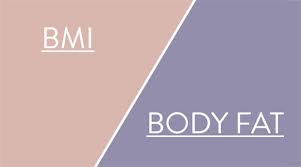BMI vs Body Fat

For years now, we typically have been measured as underweight, normal weight, overweight or obese. BMI or (Body Mass Index) is based on muscle mass and body fat % equalled together of which is an inaccurate way of measuring someone for getting optimal results. I would personally take this measurement system with a pinch of salt as it is unreliable for both the client and the personal trainer involved.
BMI is a mathematical equation based on your weight divided by your height and is then measured into a category of underweight, normal, overweight or obese for example anything below 18 is classed as 18.5-24 is classed as normal, 24-29.9 is overweight and 30 and above is obese.
This system is used worldwide in a number of gyms and doctor practices of which the problem with BMI is that it DOESN’T take into account the person’s fat, muscle mass and bone density, this then has an effect on what the BMI scale says because it doesn’t take these factors into account. Also, this type of measurement does not represent fitness levels or how healthy you may or may not be.
Usually people with higher BMI levels can actually be fitter than someone who has lower BMI levels due to the amount of muscle or bone density that the person has and therefore they will be more efficient in burning fat and will be stronger due to higher muscle mass levels.
This brings me onto body fat % which is so much more simpler than measuring BMI as it only takes the person’s body fat % levels and therefore this is a lot easier to track and to measure which this will give the person better and more longer lasting results.
An example of this would be:
Sarah and Lucy are both 64kg and are 5 foot 6 inches each and will measure on the BMI scale as 24 which is borderline normal and overweight. Lucy has a very poor diet and does not exercise. Her muscle mass is 40kg and body fat is 18kg which would indicate that she is 46% body fat.
Sarah does a weight training workout routine with 3 cardio sessions a week and eats relatively healthy and nutritious foods. She 13kg of fat and 51kg of lean mass. This would put Sarah at 20% body fat.
They both have exactly the same weight and height but the method that I have just explained would indicate that Sarah and Lucy have entirely different shaped bodies which is purely down to their lifestyles and how they live.
I would personally stick to just measuring yourself with muscle mass and body fat separately as this will be a LOT more beneficial for you in the future and you can track it easier leading to longer, sustainable results.
